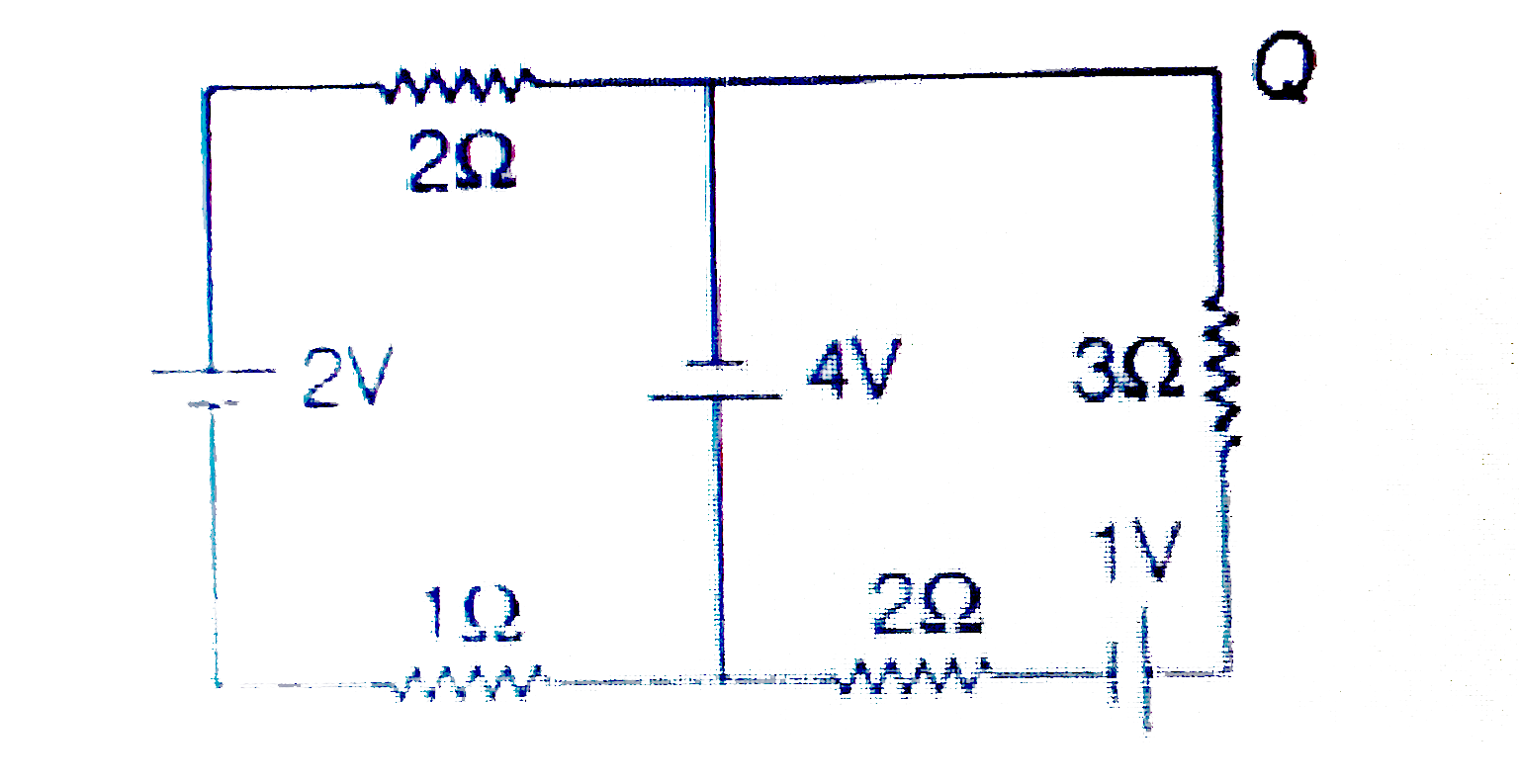The potential difference between the terminals of an electric heater is 60V when it draws a current of 4A from the source. What current will the heater draw if the potential difference is increased to 120V ?
To solve the problem, we will use Ohm's Law, which states that the voltage (V) across a resistor is equal to the current (I) flowing through it multiplied by the resistance (R). The formula is given by:
V=I×R
1. Identify the initial conditions:
- Initial potential difference (V1) = 60 V
- Initial current (I1) = 4 A
2. Calculate the resistance of the heater:
Using Ohm's Law, we can rearrange the formula to find the resistance (R):
R=VI
Substituting the initial values:
R=60V4A=15Ω
3. Identify the new potential difference:
- New potential difference (V2) = 120 V
4. Use the resistance to find the new current:
Again using Ohm's Law:
I=VR
Substituting the new potential difference and the resistance:
I2=120V15Ω=8A
5. Conclusion:
The current drawn by the heater when the potential difference is increased to 120 V will be 8 A.
- Initial potential difference (V1) = 60 V
- Initial current (I1) = 4 A
Using Ohm's Law, we can rearrange the formula to find the resistance (R):
R=VI
Substituting the initial values:
R=60V4A=15Ω
- New potential difference (V2) = 120 V
Again using Ohm's Law:
I=VR
Substituting the new potential difference and the resistance:
I2=120V15Ω=8A
The current drawn by the heater when the potential difference is increased to 120 V will be 8 A.
Topper's Solved these Questions
Similar Questions
The potential difference between the terminals of a 6.0V battery is 7.2 V when it is being charged by a current of 2.0A.What is the internal resistance of the battery?
View SolutionThe potential difference across the terminals of a battery is 10 V when there is a current of 3 A in the battery from the negative to the positive terminal. When the current is 2A in the reverse direction, the potential difference becomes 15 V. The internal resistance of the battery is
View SolutionThe potential difference (VA−VB) between the point A and B in the given figure is

View SolutionThe potential difference (VA−VB) between the point A and B in the given figure is

View SolutionThe potential difference across the terminals of a battery is 8.4V when there is a current of 1.50A in the battery from the negative to the positive terminal. When the current is 3.50Air, the reverse direction, the potential difference becomes 9.4V.
(a) What is the internal resistance of the battery?
(b) What is the emf of the battery?
View SolutionIf V is the potential difference between the ends of conductor and l is the current through it, then ohm's law states that
View SolutionAn electric bulb of resistance 500Ω, draws a current of 0.4 A. Calculate the power of the bulb and the potential difference at its end.
View SolutionIn the circuit shown, what is the potential different VPQ ?

View SolutionWhat is meant by saying that the potential difference between two points is 1V ?
View SolutionThe power rating of an electric motor that draws a current of 3.75A, when operated at 200V, is nearly
View Solution
